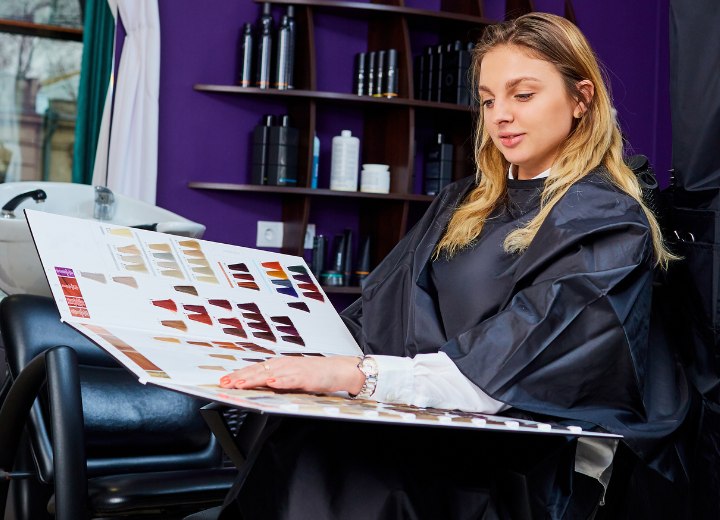Hair Colors and our Color Palette

Your stylist or salon professional can give you virtually any color you desire, with some limitations, but just because someone can do something doesn't mean they should. A good hair color professional will advise you against colors that are unflattering and can warn you about the risks to your hair of lightening the natural color too far.
You cannot go from one extreme of hair color to another.
Black hair (level 1) cannot be lightened to Lightest Blonde (level 10). Most people who attempt to do so end up severely damaging their hair. You must remember that the chemical reaction of hair lighteners to disperse the pigment in the hair takes a tremendous toll on the condition of healthy hair.
When you try to lift the hair's natural color too far, the result is often far less satisfying than imagined. Conversely, trying to go from a naturally pale blonde to black hair will result in a very flat and very unnatural-looking color.
Darker hair colors make the complexion appear more wan and pale.
Many of us have seen persons who have decided to color their graying hair in order to look younger only to have the opposite result. For most of us, as we age, our hair color (and skin tone) typically gets lighter naturally (regardless of gray) and the color we had naturally in our twenties may be too dark when we are fifty.
By coloring our hair with a too-dark hair color, we only succeed in making ourselves look pale and emphasizing any age lines and wrinkles we may have. When your goal is to cover gray hair, you should always aim for a color several shades lighter than the natural color of your non-gray hairs.

Today, we use a simpler standard: Silver and Gold. These can be easily determined by using jewelry made of the appropriate metal and placing it against the skin, typically earrings. The type that stands out the best on you is the one you are. If the silver jewelry shines brighter against your skin than the gold, you are Silver. If the reverse is true, you are Gold. The opposite will always appear less lustrous by comparison.
Silver people look best in cooler tones, such as blues, violets, and some greens, and can have natural hair colors ranging from black to platinum. The base colors of a Silver's hair are usually in the blue and violet range. For Golds, a warmer, richer palette flatters: reds, oranges, browns, burgundies, and some darker greens, and their natural hair colors range from pale golden blondes to rich dark auburn and brown. The Gold type has base hair colors ranging from red to orange. People who were Spring and Winter palettes in the old system are usually Silvers, while those who were Autumn and Summer palettes are usually Golds.
By paying attention to the right colors for you and remembering the above rules of hair coloring, you can better choose a flattering hair color and avoid tragic mistakes. As always, seeking the advice of a professional is the best option, but if you choose to do it on your own, make sure you are informed and take precautions.
©Hairfinder.com
